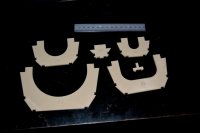More information on the new FrSky protocol ACCESS
Protocol Introduction
FrSky is constantly looking to improve the performance and reliability of RC transmission. The FrSky ACCESS protocols are the most advanced to date, it offers more features than traditional protocols.
FrSky has developed excellent new ideas that expand the role that a traditional protocols would play. Building on our well acclaimed ACCST protocol, ACCESS offers visionary features like Smart Share™, Smart Match™, and Trio Control ™. Once a receiver is registered to a radio, it can be re-bound at any time without accessing your receivers F/S button. Sharing models has never been easier, and updating has also been simplified, you no longer need to physically connect your receivers for updating. In addition, new tools like a Spectrum Analyzer and Power Meter are now available on your transmitter.
Always on the cutting edge of technology, we have developed ACCESS to improve your flying experience by allowing you to do more with your transmitter and receiver than ever before.
Main Functions and Features
Elevated performance with faster baud rate and lower latency
- Supports 24 full-range channels
Some models require more than the 16 provided by the previous protocol. For these users, ACCESS can use up to 24 channels from one signal.
- Increased baud rate and lower latency
ACCESS offers faster speeds and more precision tricks than ever before. It’s extremely important to stay ahead of the competition. Less latency translates to quicker response time.
More convenient M2M (Multi to Multi) technology
- Wireless binding, updates, and configuration
The need to access the receiver for binding, updates, and configuration are eliminated because this procedure is now achieved wirelessly. Thanks to wireless binding it has never been easier to share your models with other FrSky users. (Smart Share™).
- Automatic binding (Smart Match™)
Binding to your model is more secure than ever before. Once a receiver is registered to a radio, you can easily bind to your models wirelessly without accessing your receiver F/S button. And dual certification of the transmitter and receiver make the binding process safer than before.
Have you ever plugged-in and installed a receiver just to find out everything was plugged into the wrong input? Now you can simply remap the channel order on your transmitter.
- Manageable telemetry (Trio Control ™)
You are able to configure telemetry for up to 3 receivers simultaneously through the radio. You no longer need to use STK tools and Smart Port allows the use of third-party input/output devices with pass-through mode.
More reliability and safety – Anti-interference and Anti-hijack system
- Allows radio to act as a Spectrum Analyzer
You are now able to use your transmitter to survey the airwaves, which can measure your signal strength and others in your area. The Spectrum Analyzer allows the user to measure the power, noise, and distortion of the frequencies around.
- Allows radio to act as a Power Meter
The RF power of external devices can be measured with the addition of this new feature.
- Advanced Encryption Algorithm
Higher Encryption means more peace of mind that your model’s signal will not be interfered with.

